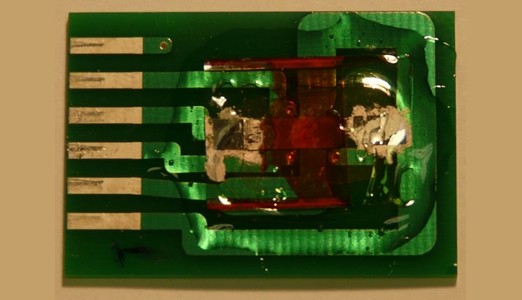A 'Dirt Cheap' Magnetic Field Sensor from ‘Plastic Paint'
on

Physicists from the University of Utah have developed an inexpensive, highly accurate magnetic field sensor of a new kind. The new magnetic-resonance magnetometer resists heat and degradation, works at room temperature and never needs to be calibrated. A disadvantage of the sensor is that it is slow, taking up to a few seconds to detect a magnetic field.
The sensor is based on an organic semiconductor polymer named MEH-PPV which is really nothing more than a dirt-cheap orange-colored electrically conducting, magnetic field-sensing plastic paint. Only a drop of it can be used to measure magnetic fields highly accurately, which costs just as little as drop of regular paint. The sensors make use of spintronics, in which data is stored both in the electrical charge of atomic nuclei and in what is known as the “spin” of those subatomic particles. Described simply, spin makes a particle behave like a tiny bar magnet that is pointed up or down within an electron or a nucleus.
The new magnetic field sensor paint contains negatively charged electrons and positively charged “holes” that align their spins in the presence of a magnetic field – but only if radio waves of a certain frequency also are applied to the semiconductor paint. If a magnetic field is present, the spins in the polymer paint will flip when the frequency of the radio waves matches the magnetic field. The change of spin in the paint is converted to an electrical current proportional to the magnetic field strength.


Discussion (0 comments)